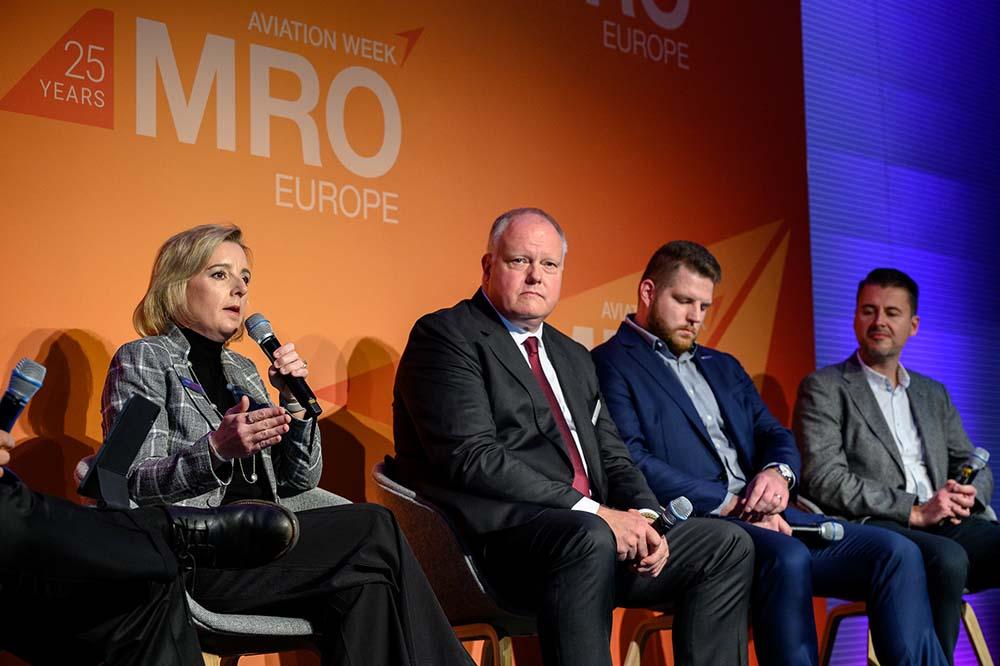
From left: Kim Ashmun, president of components and accessories at StandardAero; Frank Haberkamp, vice president of repair services at MTU Maintenance Hannover; Martin Mintel, head of Czech Airlines Technics’ components and spares division; Matt Davies, general manager at Airinmar.
AMSTERDAM— Exclusive contracts, better forecasting, OEM partnerships and developing in-house competencies are some of the techniques and opportunities that can reduce aftermarket turnaround times, according to panelists at Aviation Week’s recent MRO Europe event.
Many of the big OEMs and suppliers are facing labor challenges following significant cuts during the pandemic. However, according to Kim Ashmun, president of components and accessories at StandardAero, the MRO provider retained most of its talent, which has been beneficial for its turnaround times (TAT). She also noted the significance of technical collaboration with the OEMs to further reduce TATs and work on some of the challenges in the industry.
From a components and accessories perspective, Ashmun said some of the strategies at StandardAero include allowing additional safety stock or changing ordering habits and practices, where long leads on material has become extensive compared to previous times. “More importantly, from a supply chain perspective, we have done a great job partnering with the OEM,” she said.
Ashmun also mentioned exploiting in-house capabilities and utilizing extensive repair capability across the network of different divisions and business areas.
The big aircraft manufacturers have huge backlogs in production, and that creates its own challenges and raises further questions: Where do the OEMs prioritize? Is it manufacturing new parts under the pressure of their biggest customers, or is it in the aftermarket where they have a larger volume of smaller customers? The panel’s consensus was that production often takes priority.
Matt Davies, general manager at Airinmar, observed plenty of worldwide shortages on parts, and he noted that being able to validate that was helpful. “We are supporting multiple airlines around the world, and if we see one OEM in a particular location that has a material shortage of a particular subcomponent, we can then go and validate that with other repair shops. Sometimes it’s the same OEM in a different region of the world,” he said.
Davies indicated that credit holds are also having an impact on TATs. “A lot of the poor TATs we're experiencing at the moment are driven by credit hold suppliers not getting paid on time, which means that part is being taken out of the repair loop,” he said.
Suppliers are also less willing to invest in material without exclusive contracts, especially where there is no assurance of volume. Davis noted that when setting up those contracts, it is advisable to look at the world airline supplier guide and examine the product support agreements that have been negotiated by the manufacturers. “We try to encourage them to get that commitment and partnership with suppliers and get into those exclusive contracts,” he said.
Martin Mintel, head of Czech Airlines Technics’ components and spares division, also highlighted the importance of forecasting. He noted that delivery of proper forecasting from airlines would help repair shops better prepare for demand and account for issues such as labor and materials. “Once we know the demand from the client, we can plan the capacities, we can purchase the material in advance and then we can deliver the good lead time, especially during the busy summer season,” he said.





